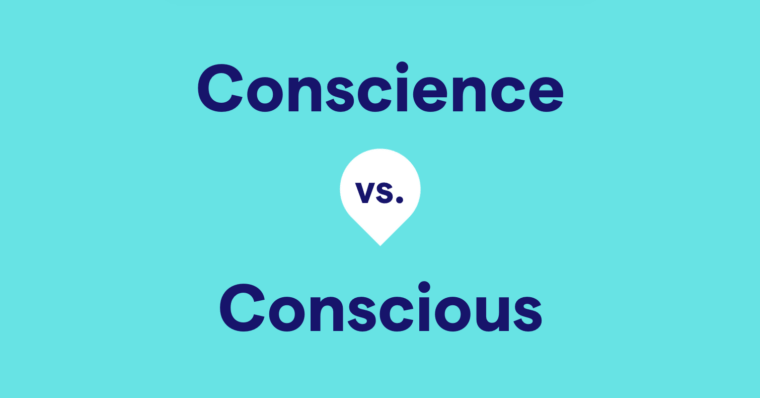
An introduction for an essay or research paper is the first paragraph, which explains the topic and prepares the reader for the rest of the work. Because it’s responsible for both the reader’s first impression and setting the stage for the rest of the work, the introduction paragraph is arguably the most important paragraph in the work.
Knowing how to write an introduction paragraph is a great skill, not just for writers, but for students and researchers as well. Here, we explain everything you need to know to write the best introduction, such as what to include and a step-by-step process, with some introduction paragraph examples.
What is an introduction?
Your introduction is a way of preparing your reader for your paper. As the first paragraph of your writing, it makes the first impression and sets the reader’s expectations for tone, voice, and writing style. More importantly, your introduction provides the necessary background for your reader to understand your paper’s purpose and key points.
The introduction is also a way to engage and captivate your reader. An interesting, thought-provoking, or generally entertaining introduction makes your reader excited to keep reading—and an eager reader is an attentive reader.
What to include in an introduction
Introductions generally follow the writing style of the author and the format for the type of paper—for example, opening with a joke is appropriate for some essays, but not research papers. However, no matter what your writing style is or what kind of paper you’re writing, a good introduction includes at least three parts:
- A hook to capture the reader’s attention
- Background for context
- A clearly defined thesis statement or main point of your paper
How to write a hook
The hook refers to anything that grabs (or “hooks”) your reader’s attention and makes them interested. This could be a mystery, such as posing a question and only answering it at the end of your paper. Or it could be a shocking statistic, something that makes your reader rethink what they thought they knew and become curious for more information.
Hooks can be even more creative. Some papers start with an analogy or parable to present complicated topics in a way that someone with little experience can understand. Likewise, many writers opt to use personal anecdotes to show a more human side and spark an emotional connection with the reader.
When all else fails, you can use a poignant quote. If you’re having trouble putting your thoughts into words, maybe one of the great minds from history has already said it well.
You can read all about how to write a hook here, including more detailed instructions and examples.
How to add background information
Not every paper requires background knowledge, but sometimes your reader needs to catch up or understand the context before you make your original points.
If you’re writing about something factual, such as a scientific or historical paper, you may need to provide a small lesson on the basics. For example, if you’re writing about the conflict between ancient Egypt and Nubia, you might want to establish the time period and where each party was located geographically.
Just don’t give too much away in the introduction. In general, introductions should be short. If your topic requires extensive background to understand, it’s best to dedicate a few paragraphs to this after the introduction.
How to write a thesis statement
Every good introduction needs a thesis statement, a sentence that plainly and concisely explains the main topic. Thesis statements are often just a brief summary of your entire paper, including your argument or point of view for personal essays. For example, if your paper is about whether viewing violent cartoons impacts real-life violence, your thesis statement could be:
Despite the rhetoric and finger-pointing, no evidence has connected live-action role-play violence with real-world violence, but there is plenty of evidence for exoneration, as I explain here.
Learning to write a good thesis statement is an essential writing skill, both in college and the world of work, so it’s worth taking the time to learn. The rule of thumb for thesis statements is not to give everything away all at once. Thesis statements, and more broadly introductions, should be short and to the point, so save the details for the rest of the paper.
How to write an introduction paragraph in 6 steps
1 Decide on the overall tone and formality of your paper
Often what you’re writing determines the style: The guidelines for how to write an introduction for a report are different from those for how to write an English essay introduction. Even the different types of essays have their own limitations; for example, slang might be acceptable for a personal essay, but not a serious argumentative essay.
Don’t force yourself to write in a style that’s uncomfortable to you. If you’re not good at making jokes, you don’t need to. As long as your writing is interesting and your points are clear, your readers won’t mind.
2 Write your thesis statement
At the beginning of writing a paper, even before writing the research paper outline, you should know what your thesis is. If you haven’t already, now is the time to put that thesis into words by writing your thesis statement.
Thesis statements are just one sentence, but they are usually the most important sentence in your entire work. When your thesis is clearly defined, your readers will often use it as an anchor to understand the rest of the writing.
The key to writing a good thesis statement is knowing what to ignore. Your thesis statement should be an overview, not an outline. Save the details, evidence, and personal opinions for the body of the paper.
If you’re still having trouble, ask yourself how you’d explain this topic to a child. When you’re forced to use small words and simplify complex ideas, your writing comes across more clearly and is easier to understand. This technique also helps you know which details are necessary up front and which can wait until later.
3 Consider what background information your reader needs
Don’t take your own experience for granted. By this point in the writing process, you’ve probably already finished your research, which means you’re somewhat of an expert on the topic. Think back to what it was like before you learned: What did you wish you had known then?
Even if your topic is abstract, such as an ethical debate, consider including some context on the debate itself. How long has the ethical debate been happening? Was there a specific event that started it? Information like this can help set the scene so your reader doesn’t feel like they’re missing something.
4 Think of a good hook
Writing a hook can be the most difficult part of writing an introduction because it calls for some creativity. While the rest of your paper might be presenting fact after fact, the hook in your introduction often requires creating something from nothing.
Luckily, there are already plenty of tried-and-true strategies for how to start an essay. If you’re not feeling very creative, you can use a method that’s already been proven effective.
Just remember that the best hooks create an emotional connection—which emotion is up to you and your topic.
5 Write a rough draft of your introduction without pressure
It’s normal to clam up when writing a rough draft of your introduction. After all, the introduction always comes first, so it’s the first thing you write when you finally begin.
As explained in our guide to writing a rough draft, the best advice is not to pressure yourself. It’s OK to write something that’s messy—that’s what makes this draft rough. The idea here is to get words on paper that make your point. They don’t have to be the perfect words; that’s what revisions are for.
At the beginning, just worry about saying what needs to be said. Get down your hook and thesis statement, and background information if necessary, without worrying about how it sounds. You’ll be able to fix the problems later.
6 Revise your introduction after you’ve written your whole paper.
We recommend finishing the first draft of your entire paper before revising the introduction. You may make some changes in your paper’s structure when writing the first draft, and those changes should be reflected in the introduction.
After the first draft, it’s easier to focus on minutiae like word choice and sentence structure, not to mention finding spelling and grammar mistakes.
Introduction for an essay example
While other kids’ memories of circuses are happy and fun, what I recall most from my first time at a circus was feeling sorry for the animals—I can still remember the sadness in their eyes. [HOOK] Although animal rights in the circus have come a long way, their treatment of animals even under the new laws is still cruelty plain and simple. [BACKGROUND] The way circuses abuse animals needs to be abolished immediately, and we need to entirely rethink the way we use animals for entertainment. [THESIS STATEMENT]
Introduction for a research paper example
What would happen to humanity if everyone just stopped having babies? [HOOK] Although more endemic in some places than others, the global decline in birth rates has become a major issue since the end of the pandemic. [BACKGROUND] My research here shows not only that birth rates are declining all over the world, but also that unless the threats are addressed, these drastic declines will only get worse. [THESIS STATEMENT]
Introduction FAQs
What is an introduction?
An introduction is the first paragraph in an essay or research paper. It prepares the reader for what follows.
What’s the purpose of an introduction?
The goal of the introduction is to both provide the necessary context for the topic so the reader can follow along and also create an emotional connection so the reader wants to keep reading.
What should an introduction include?
An introduction should include three things: a hook to interest the reader, some background on the topic so the reader can understand it, and a thesis statement that clearly and quickly summarizes your main point.





